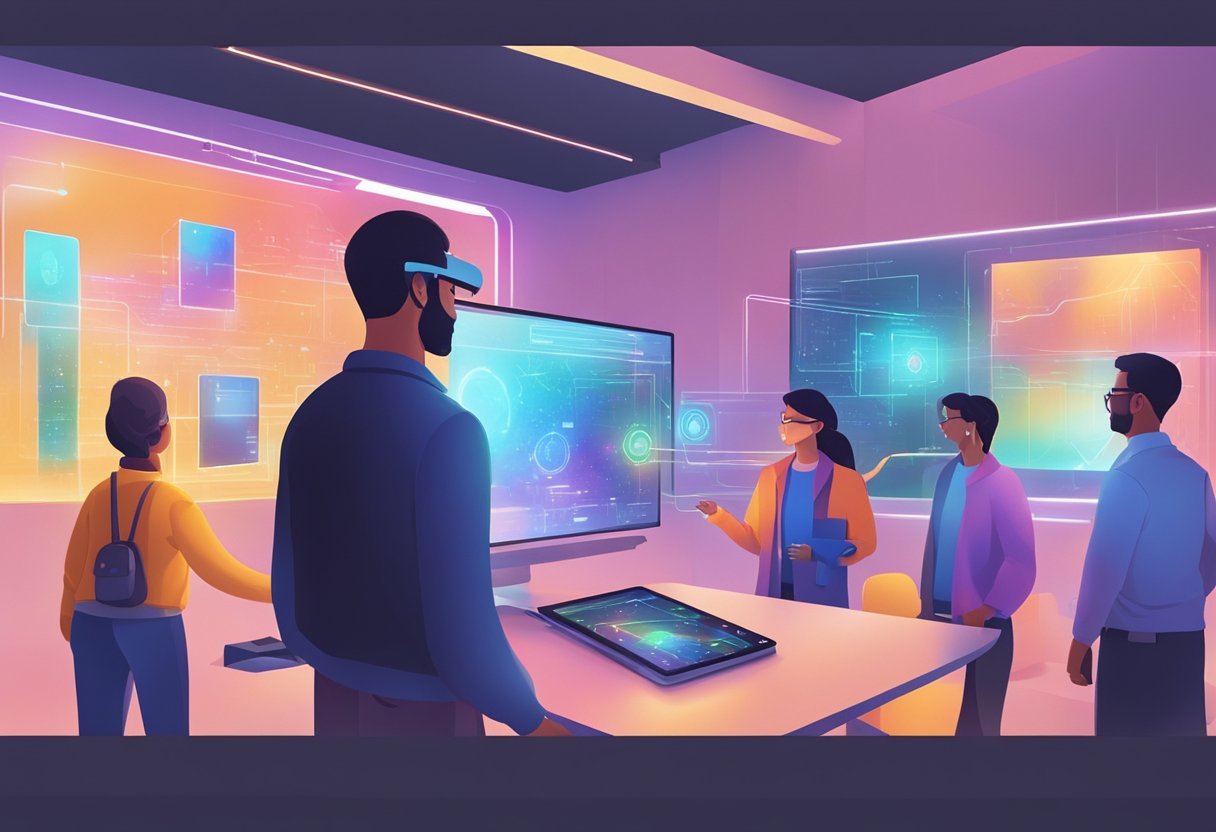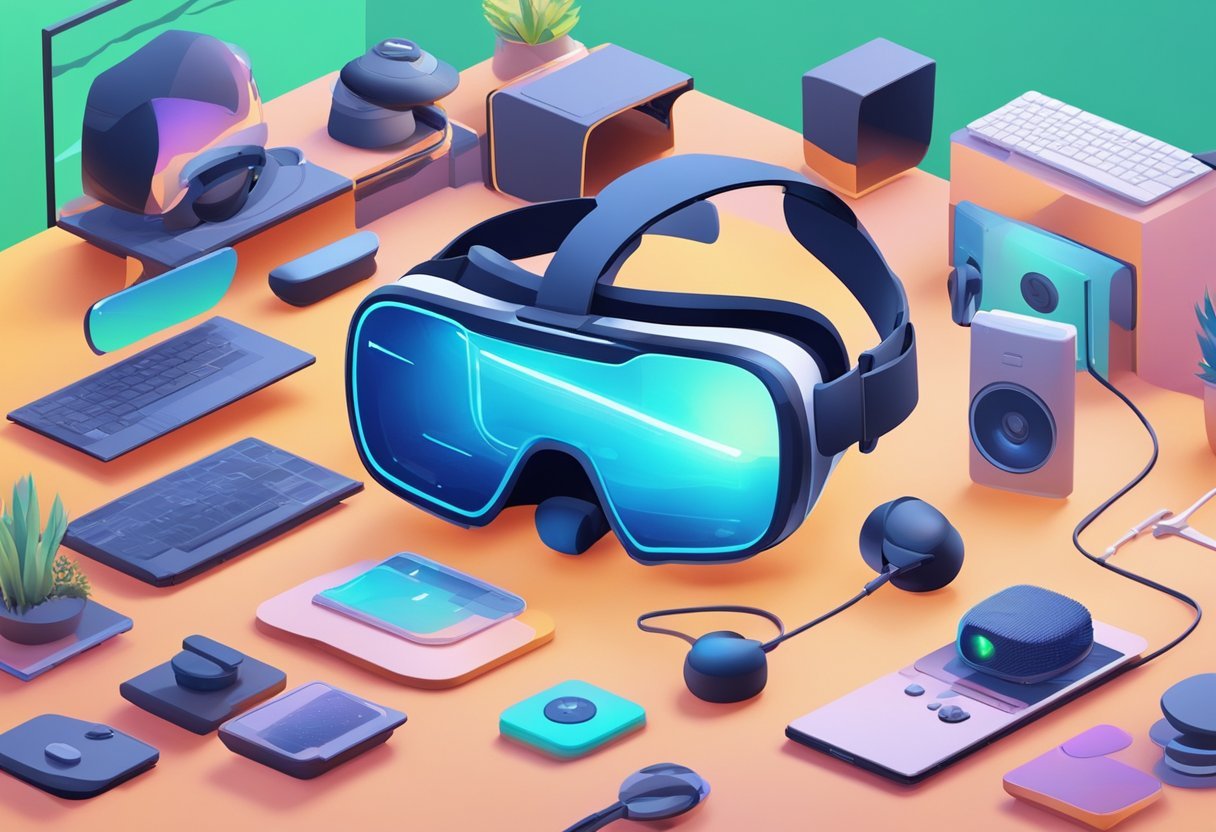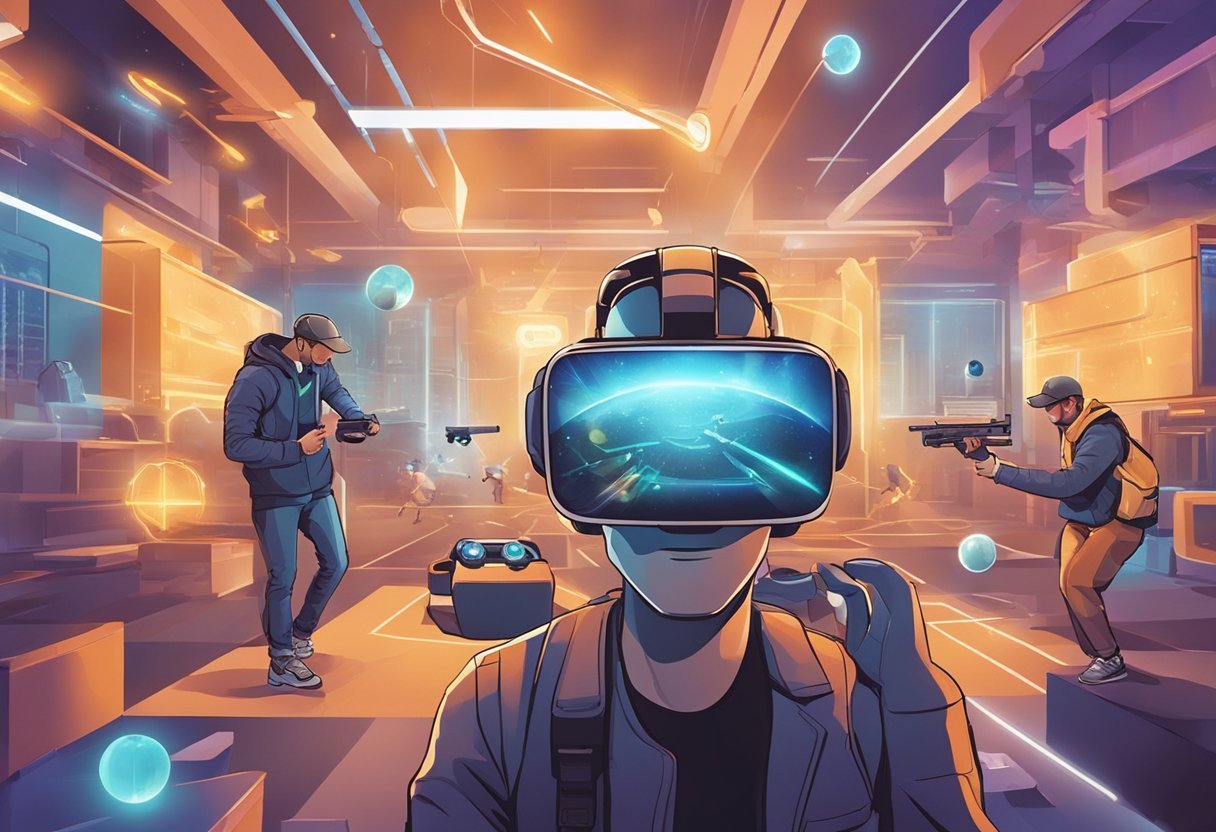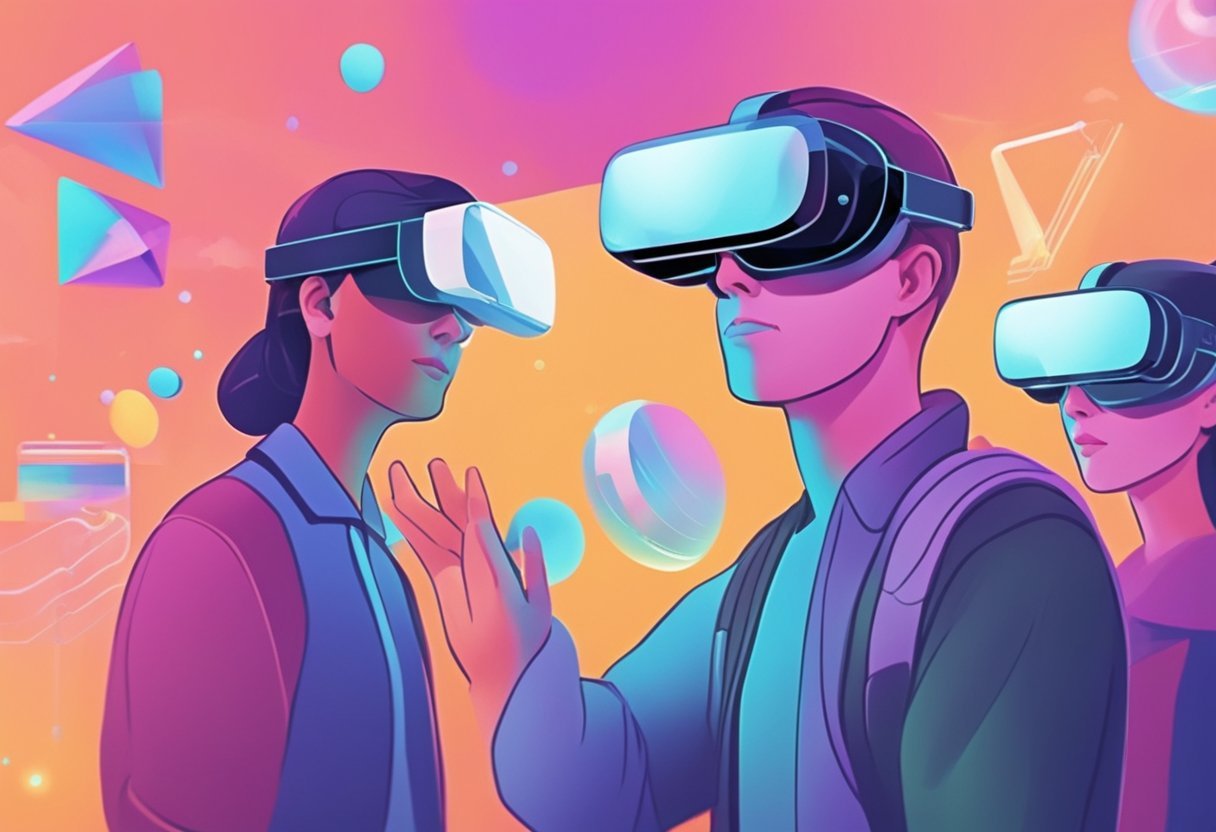Augmented reality (AR) is a rapidly growing technology that is set to revolutionize our everyday lives. AR is a technology that superimposes a computer-generated image onto a user’s view of the real world, thus enhancing the user’s perception of reality. The technology is already being used in various sectors such as education, healthcare, and retail, and its potential uses are limitless. The future of augmented reality in our everyday life is promising, with AR applications making our daily tasks more accurate, efficient, and safer. In this blog post we will explore the future of augmented reality in our everyday life and how AR will impact our lives
AR has the potential to transform the way we interact with the world around us, enabling us to see and experience things that were previously impossible. For example, AR can be used to enhance the shopping experience by allowing customers to try on clothes virtually, or to provide doctors with a 3D view of a patient’s anatomy during surgery.
Key Takeaways
- Augmented reality has the potential to revolutionize our everyday lives by enhancing our perception of reality.
- AR is already being used in various sectors such as education, healthcare, and retail, and its potential uses are limitless.
- AR can make our daily tasks more accurate, efficient, and safer, and has the potential to transform the way we interact with the world around us.
Technological Foundations of AR
Augmented Reality (AR) has become an increasingly popular technology in recent years, with its potential to blend digital content with the real world. The core technologies that make AR possible include computer vision, eye tracking, and LiDAR. Computer vision is the ability of a computer to interpret and understand the visual world through images or video. Eye tracking allows AR devices to track the user’s gaze and adjust the display accordingly. LiDAR (Light Detection and Ranging) is a technology that uses lasers to measure distances and create 3D maps of environments.
Advancements in AI and AR Integration
Artificial Intelligence (AI) has also played a significant role in the advancement of AR technology. AI algorithms can help AR devices to better understand the environment and provide more accurate and relevant information to the user. For example, AI can be used to identify objects in the real world and provide additional information about them. AI can also be used to improve the accuracy of AR tracking, making it easier for users to interact with digital content.
AR Devices and Wearable Technology
AR technology has been integrated into a variety of devices, including smartphones and AR glasses. Smartphones have become a popular platform for AR applications, with many apps using the device’s camera and sensors to overlay digital content onto the real world. AR glasses, on the other hand, provide a more immersive experience, with the ability to display digital content directly in the user’s field of view.
Wearable technology has also played a role in the advancement of AR, with devices such as smartwatches and fitness trackers providing additional data that can be used to enhance the AR experience. For example, a smartwatch could be used to track the user’s heart rate while they are exercising in an AR environment.
The technological foundations of AR are constantly evolving, with advancements in AI, computer vision, and wearable technology driving innovation in the field. As AR technology continues to improve, it has the potential to transform the way we interact with the world around us.
The Future of Augmented Reality in Our Everyday Life

Augmented Reality (AR) has come a long way since its invention forty years ago. Today, it is a technology that allows virtual imagery to be overlaid on the real world, and it can now be used by almost anyone. The future of augmented reality is promising, and it is expected to play a significant role in our everyday lives in the coming years.
AR has the potential to revolutionize the way we work, learn, and entertain ourselves. It can enhance our daily tasks and transform the way we interact with the world around us. With the advancement of AR technology, we can expect to see seamless integration into our daily lives.
In the future, AR devices will be more compact and affordable, making it easier for people to use them in their everyday lives. AR can be integrated into smartphones, smart glasses, and other wearable devices, allowing users to access AR applications and services on the go.
AR can also change the way we learn by providing an immersive and interactive learning experience. For example, AR can be used in education to create virtual labs, simulations, and visual aids that can help students learn complex concepts more easily.
The future of augmented reality is bright, and it is expected to have a significant impact on our everyday lives. With the integration of AR technology into our daily tasks, we can expect to see a more enhanced, immersive, and interactive world around us.
AR in Various Sectors
Augmented Reality (AR) is rapidly gaining popularity across various sectors, providing innovative ways to enhance everyday life. Here are some of the sectors that are already benefiting from AR technology.
AR in Retail and E-commerce
AR is revolutionizing the retail and e-commerce industries by providing customers with immersive experiences. With AR, customers can visualize products in their own spaces, try on virtual clothes, and even see how furniture would look in their homes before making a purchase. Retailers can also use AR to create interactive in-store displays, providing customers with a unique shopping experience.
Educational Applications of AR
AR is transforming the way students learn by providing interactive and engaging experiences. Textbooks can be enhanced with AR, providing students with 3D models and animations that help them visualize complex concepts. AR can also be used in classrooms, allowing students to explore historical sites, take virtual field trips, and conduct science experiments.
Healthcare and Medicine Enhancements
AR is providing surgeons with a new level of precision and accuracy during complex surgeries. By overlaying digital images onto a patient’s body, surgeons can visualize and navigate through complex anatomy with greater ease. AR is also being used to train medical students, providing them with realistic simulations and hands-on experience.
Manufacturing and Engineering Efficiency
AR is improving efficiency and productivity in manufacturing and engineering industries. AR can provide workers with real-time information, such as schematics and instructions, without the need to constantly refer to manuals. AR can also be used to visualize and simulate complex machinery and processes, allowing engineers to identify potential issues before they arise.
AR is already making a significant impact across various sectors, providing innovative ways to enhance everyday life. As technology continues to improve, we can expect even more exciting applications of AR in the future.
AR User Interaction and Experience
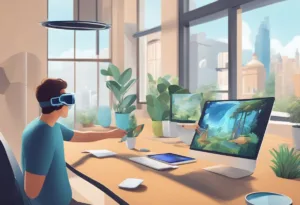
Augmented Reality (AR) has the potential to revolutionize the way people interact with their surroundings. AR technology can provide a more immersive and interactive experience for users, enhancing their overall experience. This section will explore some of the ways AR can enhance user interaction and experience.
Enhancing Entertainment and Gaming
AR has already shown its potential in the entertainment industry, particularly in gaming. The most famous example is Pokemon Go, which was launched in 2016 and quickly became a global phenomenon. Pokemon Go uses AR technology to allow players to catch Pokemon in the real world. This game demonstrated the potential of AR to create immersive and interactive experiences for users.
Navigation and Real-World Applications
AR can also be used to enhance navigation and real-world applications. For example, AR technology can be used to provide users with real-time information about their surroundings, such as directions, points of interest, and local businesses. This technology can also be used to provide users with an interactive experience, such as virtual tours of historical sites or museums.
The Role of AR in Immersive Learning
AR can also play a significant role in immersive learning experiences. For example, AR can be used to provide students with virtual field trips, allowing them to explore different parts of the world without leaving the classroom. AR can also be used to create interactive learning experiences, such as simulations and games, that can help students understand complex concepts.
AR technology has the potential to enhance user interaction and experience in various industries, including entertainment, gaming, navigation, and education. As AR technology continues to evolve, it will be interesting to see how it will be used to create more immersive and interactive experiences for users.
Social and Ethical Implications
Privacy and Data Security Concerns
As augmented reality (AR) technology becomes more prevalent in everyday life, there are growing concerns about the privacy and security of personal data. AR devices often collect and process large amounts of data, including location data, images, and audio recordings. This data can be vulnerable to cyberattacks or misuse by third parties, which can lead to serious privacy breaches.
To mitigate these risks, companies developing AR technology must prioritize data security and implement robust privacy policies. This includes using encryption and other security measures to protect data, as well as providing clear and transparent information to users about how their data is collected, stored, and used.
Impact on Social Interactions and Behavior
The widespread adoption of AR technology is also likely to have a significant impact on social interactions and behavior. For example, AR devices can blur the line between the physical and virtual worlds, leading to potential confusion and disorientation. The use of AR in public spaces can be disruptive and distracting, potentially leading to safety concerns.
To address these concerns, it is important for developers to design AR applications that are intuitive and easy to use, and that do not interfere with users’ ability to interact with the physical world. Companies must take into account the potential impact of AR on social behavior, and work to ensure that their technology is used responsibly and ethically.
While AR technology has the potential to revolutionize many aspects of daily life, it is important to consider the social and ethical implications of its widespread adoption. By prioritizing data security and responsible design, developers can help ensure that AR technology is used in a safe and beneficial way.
Future Trends and Predictions
The Evolution of AR in the Next Decade
The future of AR is promising, with experts predicting that the immersive technology will continue to evolve and transform many aspects of our lives. One of the biggest trends in AR is the move towards more immersive experiences, with XR (extended reality) and VR (virtual reality) technologies becoming increasingly popular. As companies like Meta (formerly Facebook) and Apple invest heavily in AR, we can expect to see more advanced AR experiences that blur the lines between the physical and digital worlds.
Potential New Markets and Industries
AR is not just limited to entertainment and gaming. The technology has the potential to revolutionize many industries, including healthcare, education, and the automotive industry. In healthcare, AR can be used to improve patient outcomes by providing doctors with more precise information during surgeries. In education, AR can create more engaging and interactive learning experiences for students. In the automotive industry, AR can be used to enhance driving experiences and improve safety.
Integration with Other Emerging Technologies
As AR continues to evolve, we can expect to see more integration with other emerging technologies like the metaverse and blockchain. The metaverse, a virtual world where users can interact with each other and digital objects, has the potential to create new opportunities for AR experiences. Blockchain technology can be used to create more secure and decentralized AR applications, allowing for greater user privacy and control.
The future of AR looks bright, with new advancements and applications emerging every day. As the technology becomes more accessible through wearable devices and mobile devices, we can expect to see more widespread adoption and integration into our everyday lives.
Frequently Asked Questions
How will augmented reality transform daily work and productivity?
Augmented reality has the potential to revolutionize daily work and productivity by providing workers with real-time information and assistance. For example, AR can be used to overlay instructions and diagrams onto machinery, allowing workers to complete tasks more efficiently and accurately. AR can be used to provide remote assistance, allowing experts to guide workers through tasks from a distance. This technology can also be used to create virtual workspaces, allowing workers to collaborate and share information in an immersive and interactive environment.
What are the potential impacts of AR on education and learning experiences?
Augmented reality has the potential to transform education and learning experiences by providing students with interactive and immersive learning environments. AR can be used to create simulations and visualizations that help students understand complex concepts in a more engaging and memorable way.
AR can be used to provide students with real-time feedback and assistance, allowing them to learn at their own pace. This technology can also be used to create virtual field trips, allowing students to explore and learn about new places and cultures.
In what ways could augmented reality enhance our social interactions and entertainment?
Augmented reality has the potential to enhance social interactions and entertainment by providing users with immersive and interactive experiences. For example, AR can be used to create virtual social networks, allowing users to interact with each other in a shared virtual space.
AR can be used to create immersive gaming experiences, allowing users to interact with virtual objects and characters in the real world. This technology can also be used to create interactive art installations, allowing users to explore and interact with art in new and exciting ways.
What advancements in AR hardware can we expect in the coming years?
In the coming years, we can expect to see advancements in AR hardware that make the technology more accessible and user-friendly. For example, we can expect to see improvements in the size and weight of AR devices, making them more comfortable to wear for extended periods of time.
We can expect to see improvements in the resolution and field of view of AR displays, making virtual objects appear more realistic and immersive. This technology can also be used to create more intuitive and natural user interfaces, allowing users to interact with virtual objects in a more intuitive and natural way.
How might augmented reality integrate with other emerging technologies?
Augmented reality has the potential to integrate with other emerging technologies, such as artificial intelligence and the Internet of Things. For example, AR can be used to provide users with real-time information and insights based on data collected from IoT devices. AR can be used to create more intelligent and intuitive user interfaces, allowing users to interact with AI-powered virtual assistants and chatbots in a more natural and intuitive way.
What are the privacy and security implications of widespread augmented reality use?
Widespread augmented reality use raises important privacy and security concerns. For example, AR devices can collect and transmit sensitive data, such as location and biometric information, raising concerns about data privacy and security.
AR devices can be used to capture and transmit audio and video, raising concerns about surveillance and privacy. To address these concerns, it is important to develop robust privacy and security policies and technologies that protect users’ data and ensure their safety and security.

